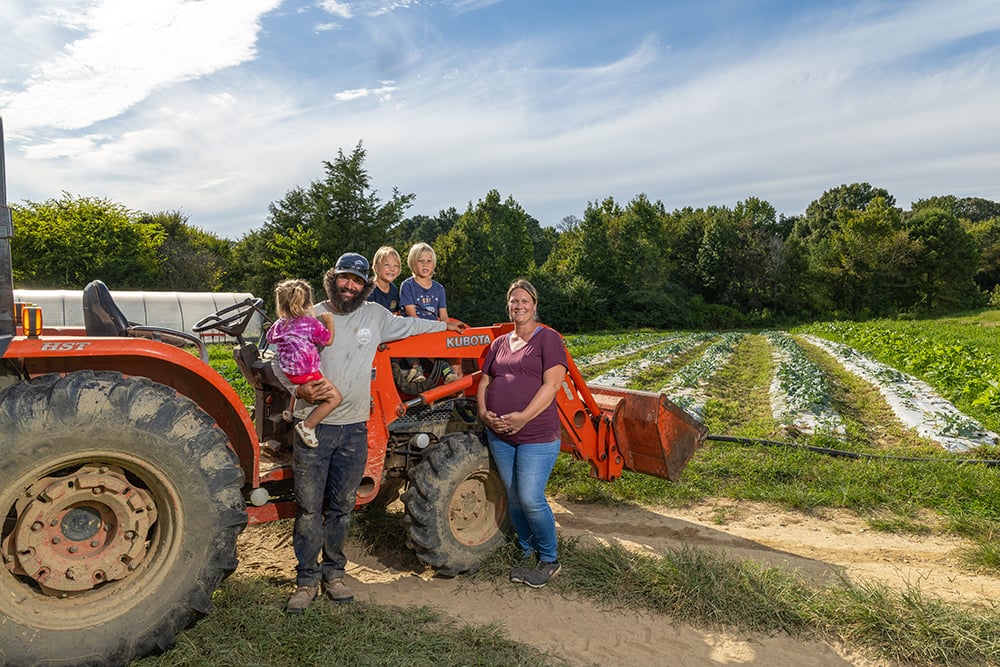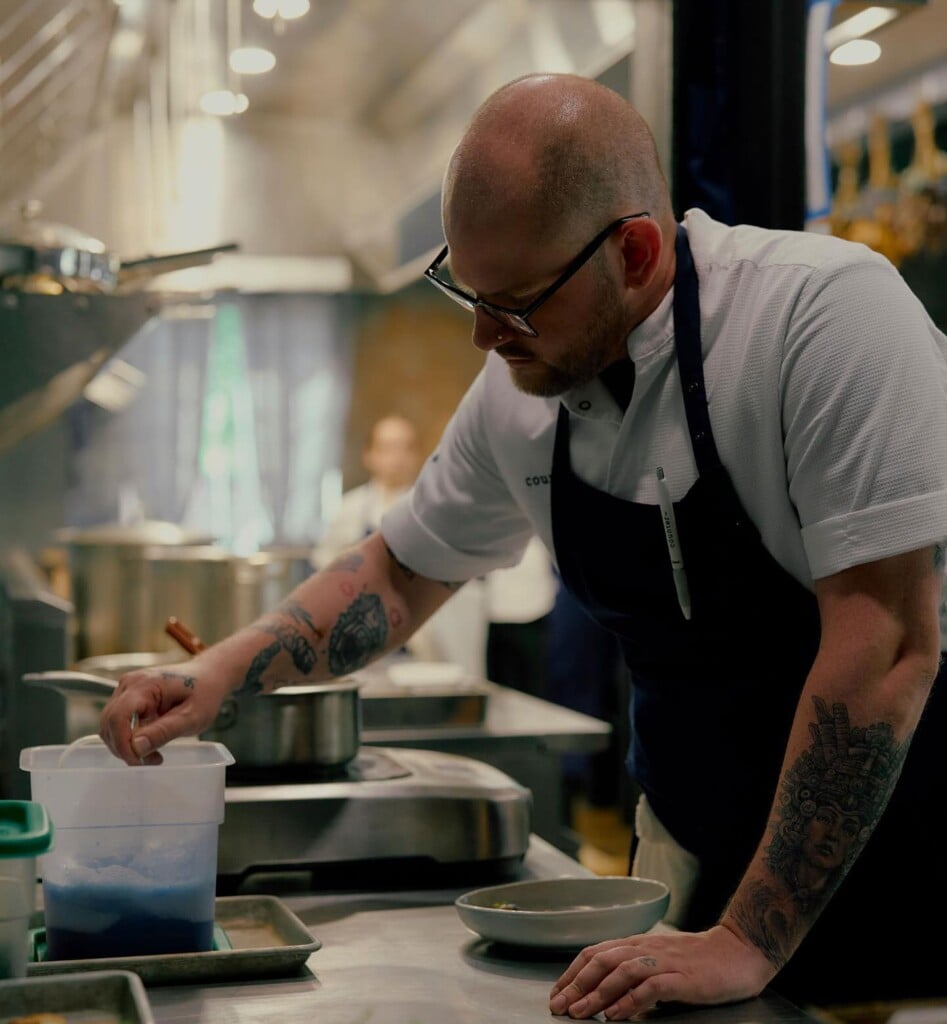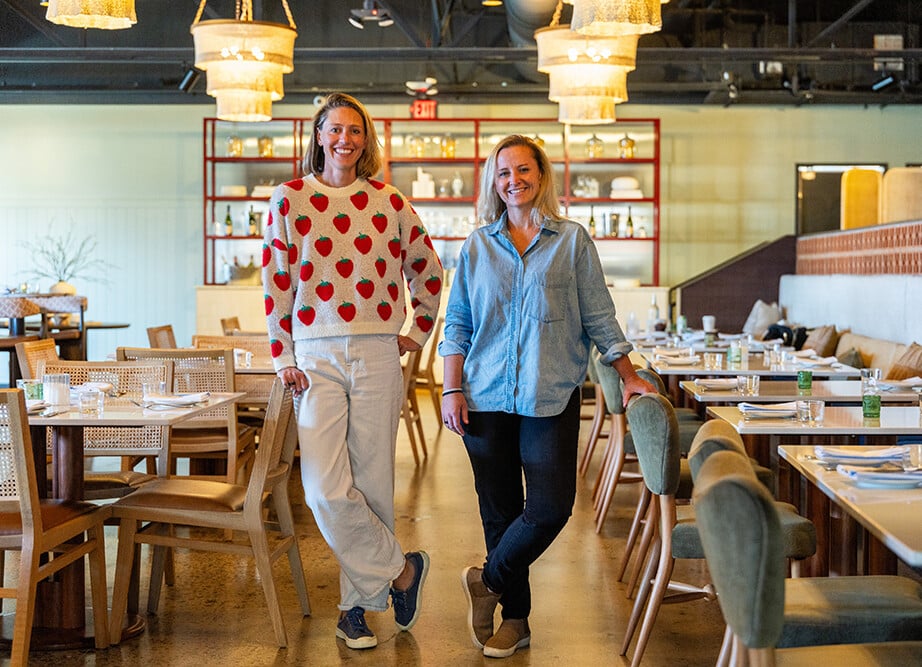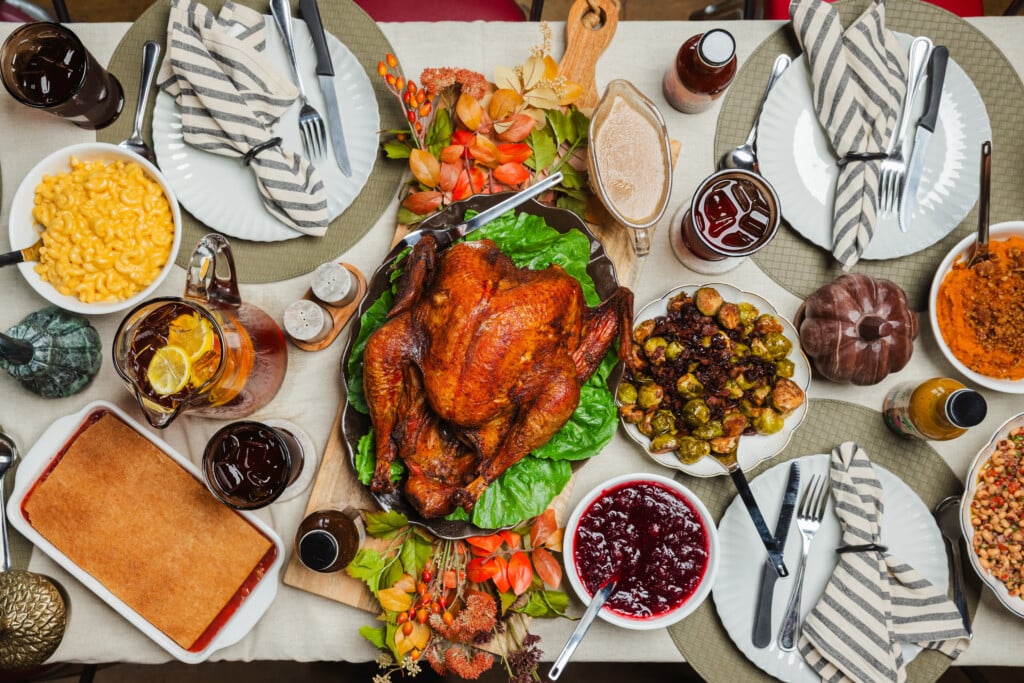Charlotte Is Rapidly Losing Farmland—Here’s What’s At Stake
What it means for Charlotte, and who’s fighting for what’s left

As Charlotte continues to rank among the fastest-growing cities in the nation, the steady rise of development transforms not just the skylines but the soil around it. New apartment buildings and office complexes emerge where empty fields once stood, which increases the burden on the region’s dwindling farmland and the people who, even today, continue to farm it.
North Carolina is on pace to lose nearly 1.2 million acres of farmland by 2040, according to a report by American Farmland Trust. Despite all the variables and uncertainty, a small, determined network of farmers works to keep local agriculture alive. Here’s what that means for residents, restaurants, and the local food systems they depend on.
Farmers are the backbone of our society, even if we don’t always see it. They don’t just grow our food. They’re entrepreneurs, climate forecasters, soil scientists, educators, and advocates. They work 10-to-14-hour days, often in the heat, cold, rain, and snow. Crops don’t keep standard business hours, and the job doesn’t include sick days for illness or injury. It may not be glamorous work, but it’s essential.
Small farms in and around Charlotte face a collision of challenges—soaring land costs, low profit margins, and zoning hurdles in a city that’s growing faster than it can plan. Between 2012 and 2022, the number of acres of farmland in Mecklenburg County fell from 16,207 to 13,050—a drop of about 20%, according to county data. As of 2023, only about 13,000 acres remained.
Sustaining what’s left is no easy feat. Undeveloped land in Mecklenburg County ranges from $180,000 to $270,000 per acre; in Union County, it’s $66,000 to $98,000. Both areas are pricing young farmers out. As more veteran farmers approach retirement, they become easy targets for rezoning and redevelopment. When a developer makes an aging farmer a lucrative offer, it can be hard to refuse.
Farming is physically demanding, but it can be mentally taxing, too. Regulations are confusing and differ from county to county. If a small farm adds agritourism to its offerings (like hosting events or farm tours), it might get a tax break—or run into zoning conflicts, depending on how and where it operates. Labor shortage is a concern as well. North Carolina agriculture—especially labor-intensive crops like sweet potatoes, tobacco, and Christmas trees—relies heavily on migrant labor, which makes up about 11% of the workforce.
Each of these hurdles has a ripple effect on our agricultural system. It’s why local organizations like Carolina Farm Trust (CFT) exist. They want to help small farms navigate the bureaucracy, assist first-generation farmers to lease or purchase land, and rebuild our regional food system from the ground up. “It’s all about the economics,” says Zack Wyatt, CFT’s president and CEO. “We need nonprofits like ours and others to help with land costs, infrastructure, and equipment. If you’re a brand-new farmer wanting to buy a piece of land, it’s going to be a $1.5 to $2 million investment.”
The ramifications of excluding new farmers could be disastrous. Losing nearly 100,000 acres of North Carolina farmland to development has led to food insecurity among more than 15% of its residents. To offset this, CFT manages a network of urban farms across Charlotte to deliver fresh produce to the city’s food deserts. “We can’t sustain this population when all of the food is coming from Mexico and Canada and California,” Wyatt says. “Could we create a system where the Charlotte metro area could feed itself? Yes, but we need to put that in overdrive. That’s the push we’re making.”
Unfortunately, federal cutbacks to farm subsidies continue to impair the farmers CFT serves and the schools and food banks they supply. “We thought we had funding, and we didn’t,” Wyatt says. “Don’t let anyone tell you food isn’t political, because it is. We have this gigantic gap in the urban-rural divide. We need to cut the bullshit and sit down and talk at the table.”
His biggest challenge is getting the average consumer to care. “Most people don’t understand that we get 60 to 65% of our food from Mexico and another 25% from Canada,” he says. “Prices are going up astronomically as we look at tariffs. Are we going to prepare or let the system collapse, then figure it out? A lot of amazing scientists will say we only have 30 years of good topsoil left.”
But Wyatt sees some glimmers and believes the city is equipped to build a new regional food model. “Charlotte is primed to lead it because of all the farmland that’s within 20 minutes of uptown,” he says. “If we can figure it out in the Charlotte market, everyone will want to know how to replicate it. That’s what gives me hope.”
SMALL CITY FARM
Kim Shaw slept until 6:30 this morning. That’s late for her, especially at the height of summer, her busiest season. As co-owner of Small City Farm, she sells her harvest to Freshlist, a regional food hub that connects small farms with local chefs, and runs a farm stand from May to December. She also operates two CSAs, subscription services where members get fresh, local produce.
By 11 a.m., she’s picked 200 pounds of pears and delivered them to Freshlist. “Then there’s all the regular farm work,” she says. “You’re pulling weeds in the hot sun for hours, and none of it is glamorous.”
Shaw and her husband, Rohan Gibbs, farm on 3 acres in northwest Charlotte, where they have 40 chickens (which she calls “chicken nation”) and 11 beehives. In spring, they grow lettuce mix and other early crops like radishes, green garlic, and arugula. During the summer, they have tomatoes, squash, peppers, eggplant, cucumbers, beans, and herbs. In fall, it’s more greens, broccoli, collards, kale, turnips, and more radishes again. They also maintain an orchard with pear, fig, pomegranate, apple, and plum trees.
Shaw, who previously worked as director of catering at the Club at Longview, is a favorite among Charlotte’s restaurant chefs. She knows her way around a kitchen and which seasonal ingredients will best complement their menus. But she’s also running one of a few small operational farms left in Mecklenburg County. Local produce as fresh as hers is becoming harder for chefs to find.
Shaw fears it will soon be unsustainable to farm in Mecklenburg County. “Unless you have family land, it’s extremely difficult to buy land in Charlotte,” she says. “It’s certainly not going to get any cheaper.” She works on thin margins, and costs for fuel, seeds, equipment, and labor are rising. She doesn’t rely on local or state support, either. “Subsidies are for commodity crops like corn and soy, not fruits and vegetables. People assume we’re subsidized, but we’re not,” she says. “Unless the county and city feel properly motivated to give incentives to keep small farms, it’s really hard.”
Farming is also notoriously unpredictable, which is why she uses a combination of wholesale, CSAs, and farm stands to balance her income. “If any one of those goes to shit, it can be OK,” she says. “Last year was a tough year, a lot of it weather-driven. Almost every farmer I know was really close to quitting. A restaurant’s margins are razor-thin, too, so it’s a match made in hell. You have to do it for a greater love.”

The Jzars grow seasonal vegetables and herbs and raise chickens, goats, and bees at Deep Roots CPS Farm. “CPS” stands for Community Planning Solutions.
DEEP ROOTS CPS FARM
Wisdom and Cherie Jzar’s entry into farming began more than 20 years ago, after they purchased their starter home in the Coulwood neighborhood in northwest Charlotte. They wanted their family to live off the land as much as possible, so they turned their 1/8-acre lot into a modern homestead where they grew their own produce, raised chickens, and maintained beehives. The Jzars, who now have five children, became proficient at all of it—and their neighbors noticed. “It was a gateway into this space of urban farming,” Cherie says. “Our neighbors thought we were so self-sufficient and would ask if they could learn from us or purchase from us.”
In 2019, they launched Deep Roots CPS Farm to focus on farming full time and teach others how to do it. By late 2021, they got lucky and found a 7-acre spread in northwest Charlotte. They purchased it from another farmer, who had built all the infrastructure in the early ’80s, and moved into the house on the property, which also has a 100-year-old barn.

“I want there to be more farmers in our community—that’s community security. Just like we need lawyers and doctors, we all need farmers.”—Cherie Jzar
“I think there is still land to farm, but it’s in existing property owners’ hands,” Cherie says. “The average age of a farmer is 63. Farmers are aging, and sometimes they don’t have kids to inherit that land to keep the farm going. When there’s no one to step in, it’s lost.”
In 2024, they expanded again to a 44-acre farm in Monroe. But it was a costly move. “You have to consider access to water irrigation,” Jzar says. “You may want to install a well, which could be $20,000.”
Once a farm starts producing crops, it needs cold storage or refrigerated warehousing, which can cost between $250 and $350 per square foot. A tractor can run between $2,000 to $13,000 depending on brand, horsepower, and condition. Then there’s the cost of labor, which can represent up to 40% of a farm’s production expenses. It’s why so many farms rely on additional income streams. Deep Roots hosts farm tours, community workshops, and farm-to-table dinners, and they have an Airbnb on-site.
Through their tours and workshops, the Jzars hope to inspire more young farmers to follow their lead. “I’m a first-generation farmer, and we’re trying to be examples of that, particularly to African Americans,” Cherie says. “I want there to be more farmers in our community—that’s community security. Just like we need lawyers and doctors, we all need farmers. We’re all eating something that a farmer grew when we eat food.”
URBAN GOURMET FARMS
“I had this nerdy interest in mushroom cultivation and decided Charlotte needed a mushroom guy,” says Hiram Ramirez, owner of Urban Gourmet Farms. In 2015, having never grown a mushroom in his life, he started a mushroom farm. Now he’s growing 1,000 pounds of them a week.
Ramirez had worked for 15 years in fine dining before he started his specialty mushroom operation in Waxhaw. “I didn’t realize mushrooms were grown in a farm setting,” Ramirez says. “I went on YouTube, googled mushroom farming, and went down a really nerdy mushroom cultivation rabbit hole.”
He rented a warehouse in Charlotte and sold his mushrooms to local restaurateurs, including Bruce Moffett and Jim Noble, but by late 2019, a post-revaluation hike to his property tax bill threatened to price him out. Around that time, he got a call from a man who worked for a “prominent business family” that owned a 330-acre plot in Weddington. After a tour of the property, they invited Ramirez to move his farm to their location.
It turned out the property was owned by Smoky Bissell, the real estate developer behind Ballantyne Corporate Park. Weddington residents didn’t approve Bissell’s plans to put rental houses on this property, so Bissell eventually donated it to Charlotte Country Day School. “So they pretty much inherited me,” Ramirez says. “I have a little island of mushrooms, but the rest of it is theirs.”
Two months after Ramirez moved his farm to Weddington, COVID hit, and he lost all of his restaurant accounts, which made up 80% of his business. (The other 20% was from farmers markets.) A few weeks into lockdown, Chef Sam Diminich reached out. He was starting Your Farms Your Table to utilize crops that had nowhere to go, and he wanted to purchase Ramirez’s mushrooms. “We reinvented ourselves to survive in this new arena,” he says. “One good thing: I got to slow down, regroup, and grow better mushrooms.”
Today, Ramirez grows eight species. Blue Oysters (“a utility mushroom for restaurants”) are his top seller, and Shiitakes are a close second: “We burn through those at the farmers market.” He also grows Lion’s Mane, Black Pearl Trumpet, Pioppino, and Chestnut. He’s built back his wholesale business, and he’s at the Matthews Farmers Market, “a vegan butcher shop,” every weekend.

Clockwise from top left: Chestnut, Shiitake, Yellow Oyster, Lion’s Mane, Black Pearl Trumpet, King Oyster, Blue Oyster, Pioppino
Money is still tight, though. “I haven’t raised my prices since 2016 because I know (my customers) are getting hit left and right, too,” he says. “My power bill in August was the highest it’s ever been because we have to run a lot of HVAC to keep the mushrooms cool.” Now he’s working on a “value-add product” like dried mushrooms or mushroom jerky to bump his sales.
“I’m not gonna lie, it sucks sometimes,” he says. “When I want to burn the place down, I get a random message or run into someone at a farmers market who says they had something at a restaurant with my mushrooms, and it was great. It’s touching people’s lives with this cool, unique product that we grow. If I won the lottery tomorrow, I’d still be growing mushrooms—just with a nicer refrigerated van.”
BOY AND GIRL FARM
Joe and Amy Rohrer didn’t even own a shovel when they purchased their Waxhaw farm in 2016. But they weren’t exactly rookies. Amy was a fourth-generation farmer from southern Illinois, and Joe, who grew up in Stallings, worked on farms as a teenager. They met while working on a small, local farm and decided they could do it on their own.

“We want our food to be affordable for all. We’re not trying to rip anyone off. It’s a dance. If no one complains about your prices, they’re probably too low.” —Amy Rohrer
They rented a house in Wesley Chapel with a 4-acre field next to it and put in two years of work before they applied for a loan with the Farm Service Agency (FSA). In 2016, they purchased a 28-acre plot in Union County and transitioned their farm work there. “It was total pastureland, so it was a huge undertaking,” Amy says. “We built the barn, the wells, and the roads. We didn’t want a ton of debt, so we got a small loan for a tractor, but we did everything else the old-school way. We just saved, bought a piece of equipment, and saved some more.”
By 2018 Boy and Girl Farm was fully operational. They cultivate 10 acres of vegetables and sell their produce at the Waxhaw Farmers Market year-round. They supply local restaurants that include Aqua e Vino, Customshop, the Rare Roots Hospitality Group, and 300 East, as well as food hubs like Freshlist and The Bulb Gallery. They also have three—soon to be four—kids under age 6.
The Rohrers like to keep their work crew small, though—usually just four employees. They use the H-2A visa program, which allows farms to fill seasonal jobs with foreign workers. It can be expensive and paperwork-heavy for the employer, but workers are guaranteed a minimum wage, housing, transportation, meals, and legal protections from immigration raids.
As an organic farm, Boy and Girl doesn’t use any herbicides, so their team does a lot of weeding. “We’re more labor-intensive, not so much equipment-intensive, so we pay a lot more in labor,” Amy says. They’ve felt the pinch as costs for fuel, seeds, and equipment rise, but they’ve tried to maintain their prices. “Of course we’re mindful of expenses, but we’re not motivated by money. We want our food to be affordable for all. We’re not trying to rip anyone off. It’s a dance. If no one complains about your prices, they’re probably too low.”
FRESHLIST
Freshlist was born out of a need to solve a fundamental problem: Small farms were growing local food, but they lacked the time and infrastructure to get it into the hands of consumers and chefs.
“We handle the logistics a farmer doesn’t have time to manage on their own,” says Matt Martin, Freshlist’s director of operations. “You don’t have to own a vehicle with insurance attached to it. All those things we try to take care of. There is a literal need for physical infrastructure, but there is the intangible infrastructure, too. … Instead of being a farmer and contacting 30 chefs, we can message those chefs for you.”

Martin with Erin Bradley, director of farmer outreach and strategic partnership, at their headquarters in the Belmont neighborhood.
Freshlist, based in the Belmont neighborhood, works with hundreds of local farmers in the Carolinas to supply restaurants, bakeries, and breweries with fresh, seasonal ingredients. Prior to COVID, this was the majority of its business, but Freshlist expanded to direct-to-consumer delivery in response to the pandemic.
“It turned out to be really helpful during (Hurricane) Helene because we could use those networks we’d already built during COVID,” says Erin Bradley, director of farmer outreach and strategic partnership. “It helped bring the support networks for those farmers closer together.”
But they’re more than just a middleman. Their bigger impetus is giving more profits back to the farmers they serve. “On average, a farmer receives 10 to 13 cents for every dollar for something sold in the grocery store,” Bradley says. “We’re 71 cents. The majority of money that comes into Freshlist goes right back out to the farmers that grew the food.”
Today, Freshlist works with more than 200 small farms across the Carolinas, and they serve more than 150 restaurants, caterers, and bakers in the region.
“You find purpose pouring back into your community,” Martin says. “Using my skills as a trained professional chef, I’m connected in a non-adjacent way. Helping chefs is directly helping farmers.”











